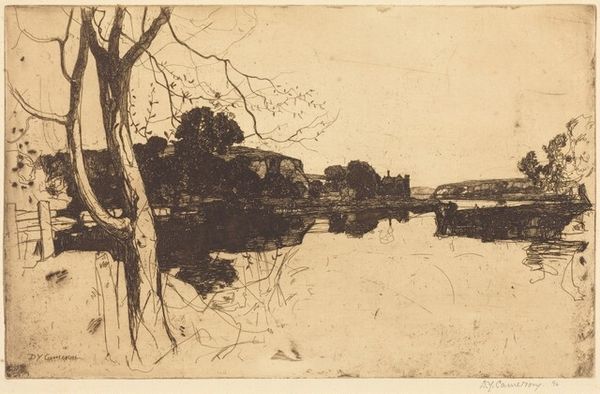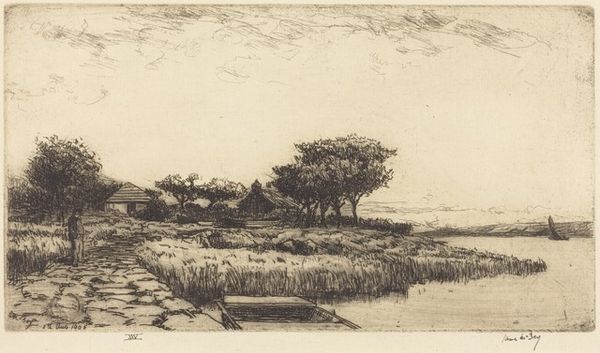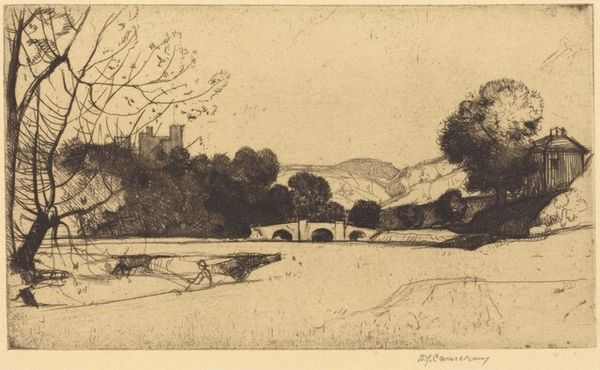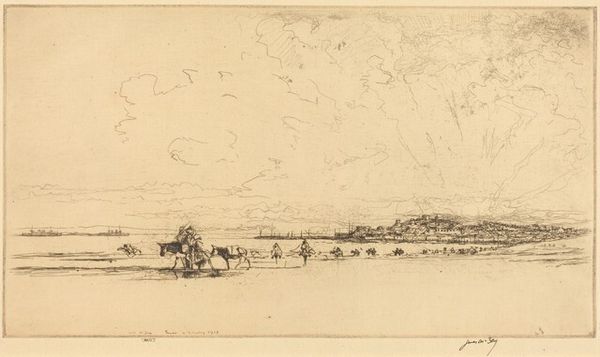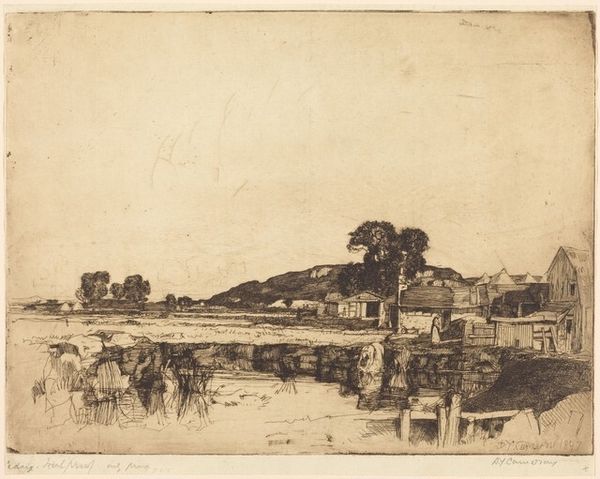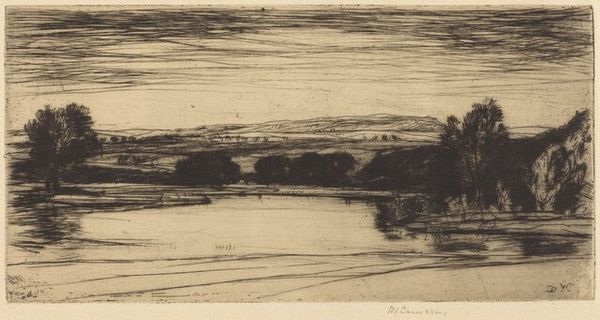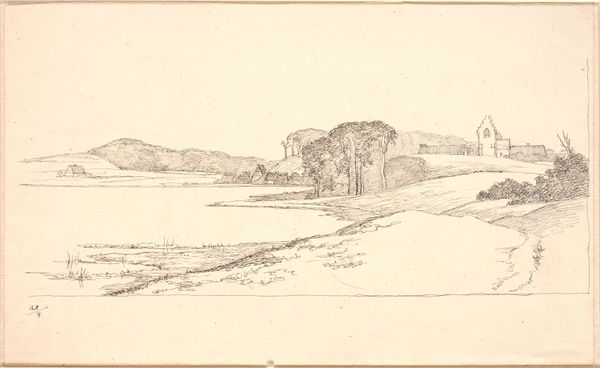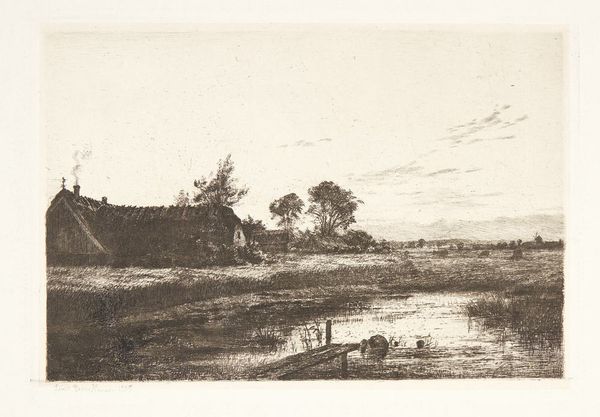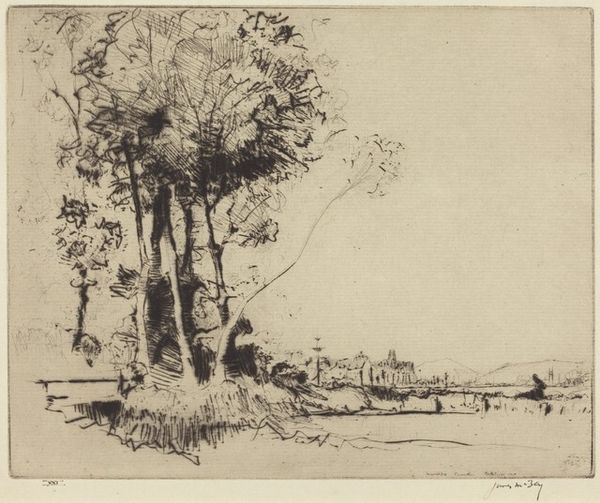
Copyright: National Gallery of Art: CC0 1.0
Curator: Editor: Here we have David Young Cameron's etching, "The Lea, near Ryehouse," created in 1902. It’s a rather small and serene landscape. I’m struck by the textures achieved through the etching process; the fields have a distinct woven feel. What do you see in this piece? Curator: The first thing I notice is the labor inherent in creating an etching like this. Consider the copper plate, the acid bath, the precise timing – all part of transforming raw materials into an aesthetic object, highlighting the shift of rural English society toward early manufacturing and consumer economies. Do you think this image romanticizes that rural labor or speaks to a deeper connection with the land? Editor: It's hard to say. It’s definitely not gritty, but it also doesn't feel overtly romantic. Perhaps it shows a shift away from an agrarian workforce toward industrialized printmaking, using machines. What I mean is, it’s a depiction of landscape created through technology that might have been displacing farm laborers, maybe it's not celebrating them. Curator: Exactly. It's easy to focus on the scene depicted - a quiet landscape - but Cameron, through his printmaking, engages in the cycle of production. Each print produced generates something of greater value. This transformation of materials elevates the status of an everyday scene to fine art. Editor: I never really thought about printmaking in terms of materiality and production before, I guess. I see the landscape genre and how printmaking impacts value differently. Curator: That makes it an example of art's commodity, in effect, which would influence our idea of art itself. Editor: Right! Now I am also looking at Cameron's use of labor! Thanks.
Comments
No comments
Be the first to comment and join the conversation on the ultimate creative platform.

